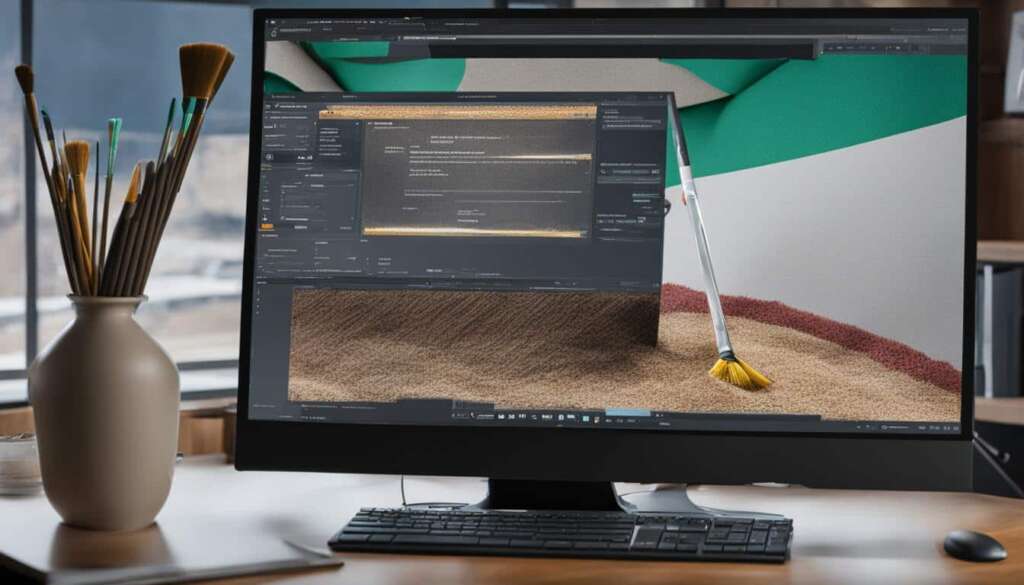Table of Contents
Are you looking to boost the performance and speed of your PC? Adding an SSD (Solid State Drive) to your desktop computer can do just that. With a few simple steps, you can install an SSD and enjoy faster boot times, improved application loading, and smoother multitasking. In this guide, we’ll show you how to add an SSD to your PC and transfer your data seamlessly.
To begin, let’s take a look at the step-by-step process of installing an SSD in your desktop:
Step 1: Gather the necessary tools and equipment. You’ll need a screwdriver, SATA cables, and of course, the SSD itself. Make sure your PC is powered off and unplugged before you begin.
Step 2: Open your PC case to access the internals. Locate an available drive bay or an empty slot on the motherboard for your SSD. If necessary, remove any existing drives or brackets that may be occupying the space.
Step 3: Carefully insert the SSD into the chosen slot or bay. Secure it in place with screws or brackets, ensuring a tight fit. Refer to your PC’s manual or manufacturer’s guidelines for specific instructions.
Step 4: Connect the SSD to your PC’s power supply using the appropriate cables. You’ll also need to connect it to the motherboard via a SATA cable, ensuring a secure connection at both ends.
Step 5: Close your PC case and plug it back in. Power on your computer and enter the BIOS settings to ensure that your system recognizes the newly installed SSD. If necessary, configure the boot order to prioritize the SSD as the primary drive.
Once you have successfully installed the SSD, it’s time to transfer your data to the new drive. This will allow you to keep your files, applications, and settings intact. Before you begin, make sure to back up any important data to an external storage device.
To transfer your data, you can use various methods such as cloning your existing drive or performing a clean install. Cloning allows you to create an exact copy of your current drive onto the new SSD, while a clean install involves reinstalling your operating system and applications from scratch. Each method has its pros and cons, so be sure to choose the one that best suits your needs.
With these easy steps, you can add an SSD to your PC and enjoy a significant performance boost. Whether you’re a gamer, a content creator, or simply looking to improve your productivity, upgrading to an SSD is a worthwhile investment. So why wait? Start enjoying the benefits of faster load times and smoother operation today!
Types of SSDs: M.2 vs 2.5 Inch SATA
When choosing an SSD for your PC, you have two main options to consider: M.2 SSDs and 2.5 Inch SATA SSDs. Understanding the difference between these two types of SSDs can help you make an informed decision for your storage needs.
M.2 SSDs
M.2 SSDs are small and compact, making them an excellent choice for slim and lightweight devices such as laptops and ultrabooks. These SSDs connect directly to the motherboard using an M.2 slot, eliminating the need for cables and reducing clutter inside your PC.
One of the significant advantages of M.2 SSDs is their incredible speed. They use the PCIe interface, allowing for faster data transfer rates compared to traditional hard disk drives (HDDs) and 2.5 Inch SATA SSDs.
Moreover, M.2 SSDs come in various lengths and widths, denoted by their key types. The most common key types include M-key and B-key. It’s crucial to check your motherboard’s specifications to ensure compatibility before purchasing an M.2 SSD.
2.5 Inch SATA SSDs
In contrast, 2.5 Inch SATA SSDs are larger in size and follow the same form factor as traditional HDDs. These SSDs are ideal for desktop PCs and larger laptops that have dedicated drive bays.
One of the benefits of 2.5 Inch SATA SSDs is their compatibility with older systems. Most motherboards and laptops still have SATA ports, allowing for a seamless upgrade from an HDD to an SSD without needing additional hardware or motherboard compatibility considerations.
Although 2.5 Inch SATA SSDs may not offer the same speed as M.2 SSDs, they still provide a significant performance boost when compared to HDDs. They are an excellent choice for users who prioritize storage capacity and compatibility over maximum speed.
Here’s a visual comparison of the key differences between M.2 SSDs and 2.5 Inch SATA SSDs:
| M.2 SSDs | 2.5 Inch SATA SSDs |
|---|---|
| Smaller form factor | Larger form factor |
| Directly connects to motherboard | Connects via SATA ports |
| Offers faster data transfer rates | Slightly lower data transfer rates |
| Requires compatible M.2 slot | Compatible with SATA ports |
Cloning vs Clean Install: Which Method to Choose
When it comes to installing an SSD in your PC, you have two main methods to choose from: cloning your existing drive or performing a clean install. Each method has its own advantages and considerations, so it’s important to understand the differences before making a decision.
If you opt for cloning, you’ll be able to transfer all your data, settings, and applications from your current drive to the new SSD. This method is ideal if you want to minimize the downtime and seamlessly transition to the faster SSD without having to reinstall everything. However, it’s important to note that the new SSD should have the same capacity or larger than your current drive to accommodate all the data.
On the other hand, a clean install involves starting fresh by reinstalling your operating system (OS) and applications on the new SSD. While this method requires more time and effort, it offers a clean slate and allows you to start with a clutter-free system. It’s also a great opportunity to reevaluate the organization of your files and clean up any unnecessary data.
When deciding between cloning and clean install, consider your specific needs and preferences. If you want a quick and seamless transition with all your data intact, cloning is the way to go. However, if you’re looking for a fresh start and don’t mind reinstalling everything, a clean install can provide a clean and optimized system. Ultimately, both methods will enable you to enjoy the benefits of an SSD as your primary drive, offering improved performance and speed over a traditional storage drive.
FAQ
What are the benefits of adding an SSD to a PC?
Adding an SSD to your PC can greatly enhance its performance and speed. It allows for faster boot times, quicker application loading, and improved overall system responsiveness.
What are the two main options for SSDs?
When choosing an SSD for your PC, you have two main options: M.2 SSDs and 2.5 Inch SATA SSDs. M.2 SSDs are smaller in size and connect directly to the motherboard, while 2.5 Inch SATA SSDs are larger and connect via a SATA cable.
How can I install an SSD in my desktop computer?
To install an SSD in your desktop computer, you can follow these steps:
1. Turn off your computer and disconnect the power cable.
2. Open the computer case and locate an available drive bay.
3. Install the SSD into the drive bay and secure it with screws.
4. Connect the necessary cables, such as the SATA data cable and power cable.
5. Close the computer case and reconnect the power cable.
6. Power on your computer and go into the BIOS to ensure the SSD is detected.
How do I transfer my data to the new SSD?
There are two main methods to transfer data to a new SSD: cloning your existing drive or performing a clean install. Cloning involves creating an exact copy of your current drive onto the SSD, while a clean install requires reinstalling the operating system and transferring your files manually. The method you choose depends on your preferences and specific requirements.
What is the difference between cloning and a clean install?
Cloning your existing drive to the new SSD creates an exact replica of your data, including the operating system and all files. This method preserves your settings and programs, making it a convenient option. On the other hand, a clean install involves starting fresh by reinstalling the operating system and manually transferring your files. This method allows for a clean and optimized system but requires more time and effort.







